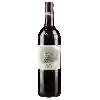
Château des LéotinsCuvée Capucine Bordeaux
In the mouth this red wine is a powerful with a nice balance between acidity and tannins.
This wine generally goes well with poultry, beef or veal.
Taste structure of the Cuvée Capucine Bordeaux from the Château des Léotins
Light | Bold | |
Smooth | Tannic | |
Dry | Sweet | |
Soft | Acidic |
In the mouth the Cuvée Capucine Bordeaux of Château des Léotins in the region of Bordeaux is a powerful with a nice balance between acidity and tannins.
Food and wine pairings with Cuvée Capucine Bordeaux
Pairings that work perfectly with Cuvée Capucine Bordeaux
Original food and wine pairings with Cuvée Capucine Bordeaux
The Cuvée Capucine Bordeaux of Château des Léotins matches generally quite well with dishes of beef, veal or game (deer, venison) such as recipes of beef with dark beer, sauté of pork with carrots and potatoes or festive chinese fondue.
Details and technical informations about Château des Léotins's Cuvée Capucine Bordeaux.
Discover the grape variety: Merlot
Merlot noir is a grape variety that originated in France (Bordeaux). It produces a variety of grape specially used for wine making. It is rare to find this grape to eat on our tables. This variety of grape is characterized by small to medium sized bunches, and medium sized grapes. Merlot noir can be found in many vineyards: South West, Languedoc & Roussillon, Cognac, Bordeaux, Loire Valley, Armagnac, Burgundy, Jura, Champagne, Rhone Valley, Beaujolais, Provence & Corsica, Savoie & Bugey.
Informations about the Château des Léotins
The Château des Léotins is one of of the world's greatest estates. It offers 23 wines for sale in the of Bordeaux to come and discover on site or to buy online.
The wine region of Bordeaux
Bordeaux, in southwestern France, is one of the most famous, prestigious and prolific wine regions in the world. The majority of Bordeaux wines (nearly 90% of the production Volume) are the Dry, medium and Full-bodied red Bordeaux blends for which it is famous. The finest (and most expensive) are the wines of the great châteaux of Haut-Médoc and the right bank appellations of Saint-Émilion and Pomerol. The former focuses (at the highest level) on Cabernet Sauvignon, the latter on Merlot.
The word of the wine: Champagne rosé
Often obtained by adding red wines (from Champagne), it is even the only vineyard where this practice is allowed. Some producers prefer the practice used in other regions, i.e. a short maceration to extract sufficient colouring matter. This results in winey rosés for meals. Elegant aperitif rosé is more often made from red wine coloured Chardonnay. Rosés can be vintage or non vintage.














